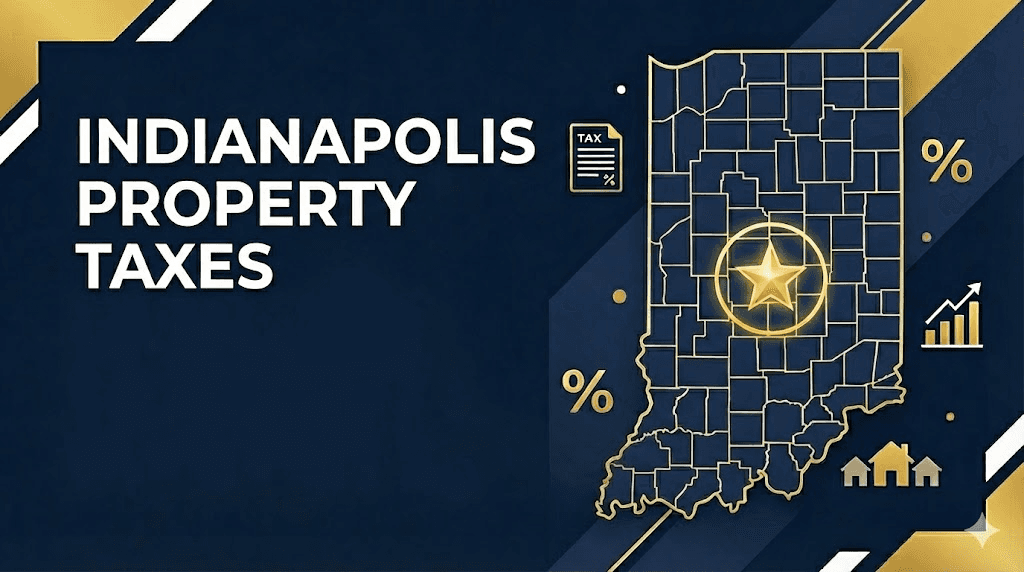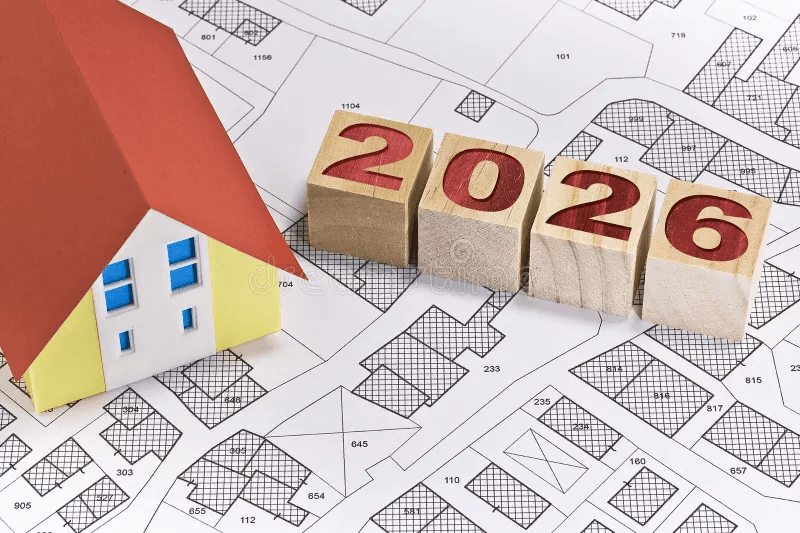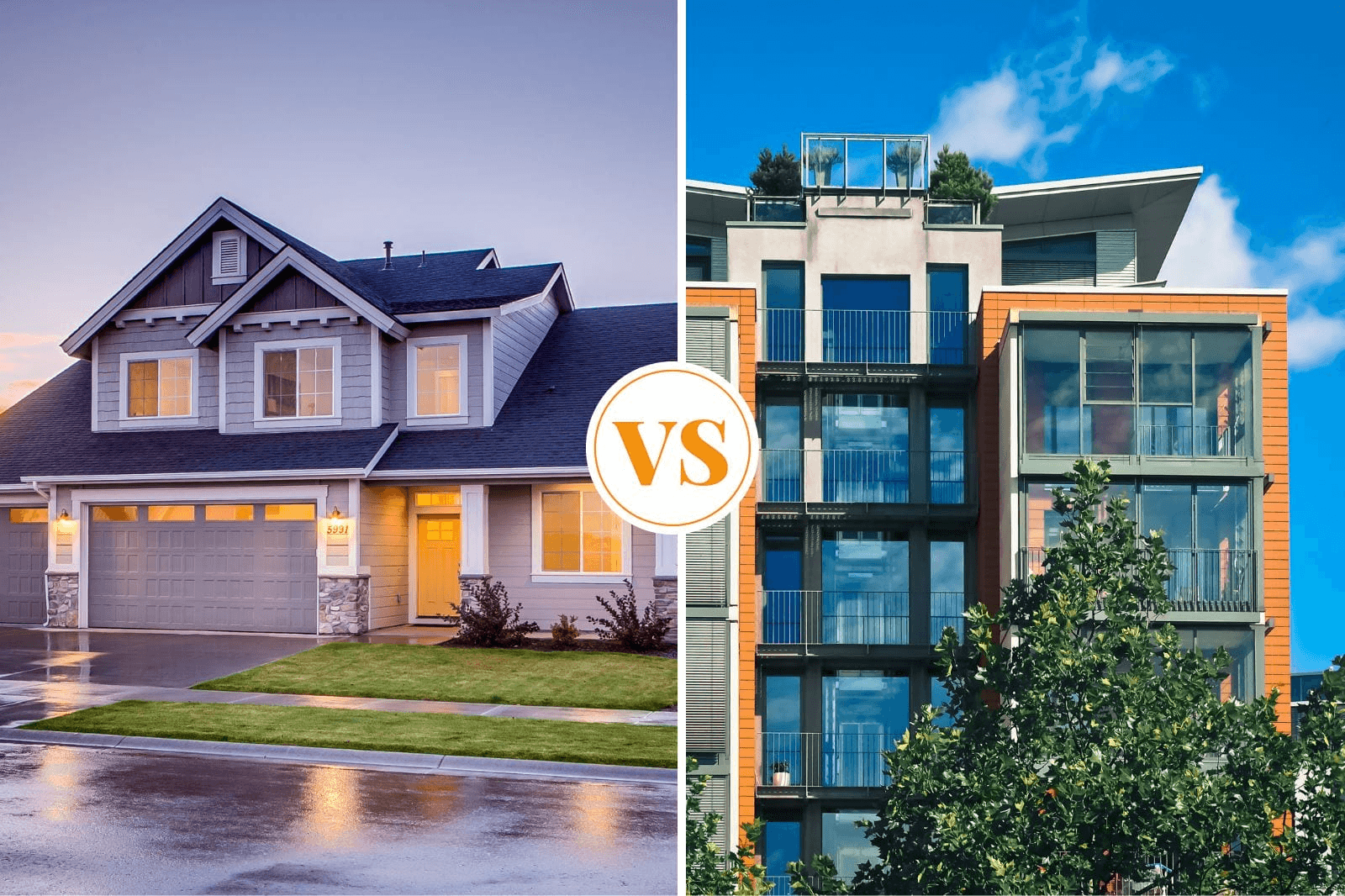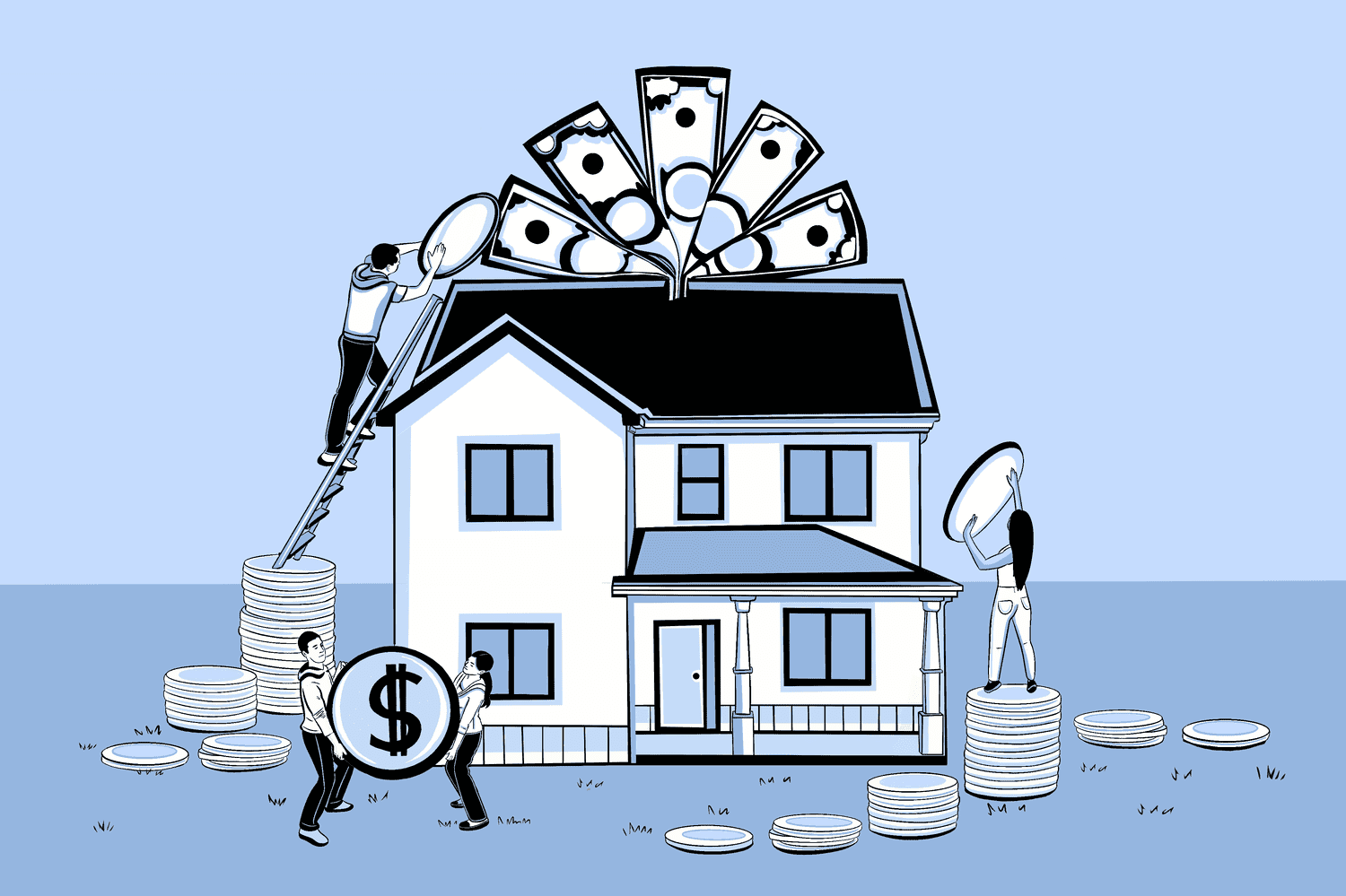So you’re ready to invest in Indianapolis real estate — but you’re torn between flipping homes for quick profit and holding rentals for steady cash flow. Both strategies work here, but which one fits your goals (and today’s 2025 market)?
Let’s break down the fix-and-flip vs buy-and-hold debate in Indianapolis, with real data, local insights, and a clear-eyed look at what’s actually performing in Indy right now.
Why Indianapolis Is Ideal for Both Strategies
Indianapolis remains one of the Midwest’s most balanced investment markets. Investors love it for low entry prices, growing population, and predictable rent demand — all ingredients for solid returns, whether you’re flipping or holding.
Here’s what the 2025 market looks like:
Median home price: ~$270,000 (Redfin, Q3 2025)
Median rent: ~$1,395/month (Realtor.com, 2025)
Average flip profit: ~$48,000 gross per property
Typical annual appreciation: ~3.2% citywide
Vacancy rate: 5.1%, below the national average
In short: there’s room to play both short and long games — but they demand different skills, capital, and timelines.
Fix-and-Flip in Indianapolis: The Quick Turnaround Play
Flipping homes in Indy has been a reliable short-term play since the early 2010s, especially in emerging neighborhoods like the Near Eastside, Garfield Park, and Eagledale.
The Appeal
Quick profits (3–9 month cycles)
Low acquisition costs relative to ARV (after-repair value)
Growing buyer demand from first-timers and relocators
A typical flip might look like this:
Purchase: $165,000
Renovation: $45,000
Sale: $270,000
Gross profit: ~$60,000
After factoring in taxes, holding costs, and realtor fees, net ROI often lands between 10–18% depending on project management efficiency.
Best Indy Neighborhoods for Flips in 2025
Near Eastside: Low buy-in, strong resale demand, lots of historic homes.
Garfield Park: Affordable entry points and growing appeal for first-time buyers.
Eagledale & Mars Hill: Cash-flow friendly areas with flip potential under $200K.
Bates-Hendricks: Slightly pricier, but high ARV and buyer interest.
Challenges to Consider
Construction costs are still high post-2023 inflation.
Supply of “true fixer-uppers” has tightened.
Short-term gains = short-term taxes (ordinary income, not capital gains).
You’ll need reliable contractors and local project oversight.
For investors running repeat flips or BRRRR conversions, check out our deeper dive: BRRRR in Indianapolis: 2025 Investor Guide.
Buy-and-Hold: Building Long-Term Wealth in Indy
If flipping is a sprint, buy-and-hold is the marathon — and Indianapolis is built for it. With stable rent growth and relatively affordable housing, holding rentals here has become the backbone of many local investor portfolios.
Why It Works in Indy
Low purchase-to-rent ratios: Investors can still find properties renting at 0.8–1.1% of purchase price.
Consistent rent growth: ~3% year-over-year since 2022.
Landlord-friendly laws: No rent control, simple eviction processes.
High renter population: Nearly half of Indianapolis residents rent.
Buy-and-Hold Example
Purchase: $220,000
Rent: $1,700/month
Cash-on-cash return: ~8% (with leverage)
Appreciation: ~3% annually
Over five years, you could realize 30–40% total ROI when factoring in appreciation, amortization, and cash flow — plus favorable long-term tax treatment.
Best Areas for Buy-and-Hold in 2025
Lawrence Township: Great schools and stable tenant base.
Speedway: Consistent rental demand from manufacturing employees.
West Indianapolis: Affordable homes, high rent-to-price ratio.
Fountain Square / Bates-Hendricks: Higher entry cost but great appreciation.
For a deeper read on rent trends and neighborhood performance, explore Indianapolis Rental Market 2025: Trends in Rents and Vacancies.
Fix-and-Flip vs Buy-and-Hold: Side-by-Side Comparison
Factor | Fix-and-Flip | Buy-and-Hold |
|---|---|---|
Goal | Quick profit | Long-term income + appreciation |
Timeframe | 3–9 months | 3–10+ years |
Capital Needed | Higher upfront, fast turnover | Moderate upfront, long-term financing |
Risk Level | High (renovation + resale risk) | Moderate (tenant + maintenance risk) |
Tax Treatment | Ordinary income | Capital gains + depreciation benefits |
Cash Flow | None until sale | Monthly rental income |
Best Fit | Active investors or contractors | Passive or portfolio-minded investors |
How Market Conditions Shape Your Strategy
In 2025, higher interest rates (hovering around 6.75%) and rising renovation costs have made pure flipping slightly tougher — unless you buy right or use creative financing.
Meanwhile, steady rent growth and low vacancy favor buy-and-hold investors who can leverage appreciation and passive income over time.
Translation: If you’re investing for short-term profit, you’ll need precision. If you’re investing for wealth, patience is your edge.
Hybrid Approach: The BRRRR Method
Many Indy investors blend both strategies through BRRRR — Buy, Rehab, Rent, Refinance, Repeat.
This hybrid model lets you:
Buy undervalued properties.
Rehabilitate to raise value.
Rent to generate income.
Refinance to pull equity and repeat.
It’s like flipping — but keeping the cash flow.
Learn how to structure BRRRR deals locally in our guide: BRRRR in Indianapolis: 2025 Investor Guide.
Investor Q&A: Common Strategy Questions
Which strategy has the higher ROI in Indianapolis?
Short-term, flips can yield 10–18% ROI. Long-term, buy-and-hold can reach 30–40% cumulative returns thanks to appreciation and loan paydown.
What neighborhoods are best for first-time investors?
For flips: Near Eastside and Garfield Park.
For rentals: Speedway, West Indy, and Lawrence Township.
Can I flip remotely in Indianapolis?
Yes, but it’s risky without local support. Partnering with a trusted Realtor and project manager is key.
What’s the average holding period for Indy rental properties?
Most investors hold 5–10 years to fully leverage appreciation, refinance opportunities, and tax benefits.
Is Indianapolis still a landlord-friendly city?
Absolutely. Indiana has no rent control, quick eviction timelines, and moderate property taxes — a strong environment for investors.
Final Thoughts: Choosing the Right Strategy for You
Both fix-and-flip and buy-and-hold investing work beautifully in Indianapolis — it just depends on your timeline, risk tolerance, and resources.
If you want quick wins and don’t mind a hands-on project, flips can pay off fast.
If you’re focused on passive income and wealth-building, buy-and-hold remains one of the most reliable plays in the Midwest.
Whatever your approach, the key to success in Indy real estate is buying right, knowing your market, and having a trusted local partner in your corner.
So you’re ready to invest in Indianapolis real estate — but you’re torn between flipping homes for quick profit and holding rentals for steady cash flow. Both strategies work here, but which one fits your goals (and today’s 2025 market)?
Let’s break down the fix-and-flip vs buy-and-hold debate in Indianapolis, with real data, local insights, and a clear-eyed look at what’s actually performing in Indy right now.
Why Indianapolis Is Ideal for Both Strategies
Indianapolis remains one of the Midwest’s most balanced investment markets. Investors love it for low entry prices, growing population, and predictable rent demand — all ingredients for solid returns, whether you’re flipping or holding.
Here’s what the 2025 market looks like:
Median home price: ~$270,000 (Redfin, Q3 2025)
Median rent: ~$1,395/month (Realtor.com, 2025)
Average flip profit: ~$48,000 gross per property
Typical annual appreciation: ~3.2% citywide
Vacancy rate: 5.1%, below the national average
In short: there’s room to play both short and long games — but they demand different skills, capital, and timelines.
Fix-and-Flip in Indianapolis: The Quick Turnaround Play
Flipping homes in Indy has been a reliable short-term play since the early 2010s, especially in emerging neighborhoods like the Near Eastside, Garfield Park, and Eagledale.
The Appeal
Quick profits (3–9 month cycles)
Low acquisition costs relative to ARV (after-repair value)
Growing buyer demand from first-timers and relocators
A typical flip might look like this:
Purchase: $165,000
Renovation: $45,000
Sale: $270,000
Gross profit: ~$60,000
After factoring in taxes, holding costs, and realtor fees, net ROI often lands between 10–18% depending on project management efficiency.
Best Indy Neighborhoods for Flips in 2025
Near Eastside: Low buy-in, strong resale demand, lots of historic homes.
Garfield Park: Affordable entry points and growing appeal for first-time buyers.
Eagledale & Mars Hill: Cash-flow friendly areas with flip potential under $200K.
Bates-Hendricks: Slightly pricier, but high ARV and buyer interest.
Challenges to Consider
Construction costs are still high post-2023 inflation.
Supply of “true fixer-uppers” has tightened.
Short-term gains = short-term taxes (ordinary income, not capital gains).
You’ll need reliable contractors and local project oversight.
For investors running repeat flips or BRRRR conversions, check out our deeper dive: BRRRR in Indianapolis: 2025 Investor Guide.
Buy-and-Hold: Building Long-Term Wealth in Indy
If flipping is a sprint, buy-and-hold is the marathon — and Indianapolis is built for it. With stable rent growth and relatively affordable housing, holding rentals here has become the backbone of many local investor portfolios.
Why It Works in Indy
Low purchase-to-rent ratios: Investors can still find properties renting at 0.8–1.1% of purchase price.
Consistent rent growth: ~3% year-over-year since 2022.
Landlord-friendly laws: No rent control, simple eviction processes.
High renter population: Nearly half of Indianapolis residents rent.
Buy-and-Hold Example
Purchase: $220,000
Rent: $1,700/month
Cash-on-cash return: ~8% (with leverage)
Appreciation: ~3% annually
Over five years, you could realize 30–40% total ROI when factoring in appreciation, amortization, and cash flow — plus favorable long-term tax treatment.
Best Areas for Buy-and-Hold in 2025
Lawrence Township: Great schools and stable tenant base.
Speedway: Consistent rental demand from manufacturing employees.
West Indianapolis: Affordable homes, high rent-to-price ratio.
Fountain Square / Bates-Hendricks: Higher entry cost but great appreciation.
For a deeper read on rent trends and neighborhood performance, explore Indianapolis Rental Market 2025: Trends in Rents and Vacancies.
Fix-and-Flip vs Buy-and-Hold: Side-by-Side Comparison
Factor | Fix-and-Flip | Buy-and-Hold |
|---|---|---|
Goal | Quick profit | Long-term income + appreciation |
Timeframe | 3–9 months | 3–10+ years |
Capital Needed | Higher upfront, fast turnover | Moderate upfront, long-term financing |
Risk Level | High (renovation + resale risk) | Moderate (tenant + maintenance risk) |
Tax Treatment | Ordinary income | Capital gains + depreciation benefits |
Cash Flow | None until sale | Monthly rental income |
Best Fit | Active investors or contractors | Passive or portfolio-minded investors |
How Market Conditions Shape Your Strategy
In 2025, higher interest rates (hovering around 6.75%) and rising renovation costs have made pure flipping slightly tougher — unless you buy right or use creative financing.
Meanwhile, steady rent growth and low vacancy favor buy-and-hold investors who can leverage appreciation and passive income over time.
Translation: If you’re investing for short-term profit, you’ll need precision. If you’re investing for wealth, patience is your edge.
Hybrid Approach: The BRRRR Method
Many Indy investors blend both strategies through BRRRR — Buy, Rehab, Rent, Refinance, Repeat.
This hybrid model lets you:
Buy undervalued properties.
Rehabilitate to raise value.
Rent to generate income.
Refinance to pull equity and repeat.
It’s like flipping — but keeping the cash flow.
Learn how to structure BRRRR deals locally in our guide: BRRRR in Indianapolis: 2025 Investor Guide.
Investor Q&A: Common Strategy Questions
Which strategy has the higher ROI in Indianapolis?
Short-term, flips can yield 10–18% ROI. Long-term, buy-and-hold can reach 30–40% cumulative returns thanks to appreciation and loan paydown.
What neighborhoods are best for first-time investors?
For flips: Near Eastside and Garfield Park.
For rentals: Speedway, West Indy, and Lawrence Township.
Can I flip remotely in Indianapolis?
Yes, but it’s risky without local support. Partnering with a trusted Realtor and project manager is key.
What’s the average holding period for Indy rental properties?
Most investors hold 5–10 years to fully leverage appreciation, refinance opportunities, and tax benefits.
Is Indianapolis still a landlord-friendly city?
Absolutely. Indiana has no rent control, quick eviction timelines, and moderate property taxes — a strong environment for investors.
Final Thoughts: Choosing the Right Strategy for You
Both fix-and-flip and buy-and-hold investing work beautifully in Indianapolis — it just depends on your timeline, risk tolerance, and resources.
If you want quick wins and don’t mind a hands-on project, flips can pay off fast.
If you’re focused on passive income and wealth-building, buy-and-hold remains one of the most reliable plays in the Midwest.
Whatever your approach, the key to success in Indy real estate is buying right, knowing your market, and having a trusted local partner in your corner.
So you’re ready to invest in Indianapolis real estate — but you’re torn between flipping homes for quick profit and holding rentals for steady cash flow. Both strategies work here, but which one fits your goals (and today’s 2025 market)?
Let’s break down the fix-and-flip vs buy-and-hold debate in Indianapolis, with real data, local insights, and a clear-eyed look at what’s actually performing in Indy right now.
Why Indianapolis Is Ideal for Both Strategies
Indianapolis remains one of the Midwest’s most balanced investment markets. Investors love it for low entry prices, growing population, and predictable rent demand — all ingredients for solid returns, whether you’re flipping or holding.
Here’s what the 2025 market looks like:
Median home price: ~$270,000 (Redfin, Q3 2025)
Median rent: ~$1,395/month (Realtor.com, 2025)
Average flip profit: ~$48,000 gross per property
Typical annual appreciation: ~3.2% citywide
Vacancy rate: 5.1%, below the national average
In short: there’s room to play both short and long games — but they demand different skills, capital, and timelines.
Fix-and-Flip in Indianapolis: The Quick Turnaround Play
Flipping homes in Indy has been a reliable short-term play since the early 2010s, especially in emerging neighborhoods like the Near Eastside, Garfield Park, and Eagledale.
The Appeal
Quick profits (3–9 month cycles)
Low acquisition costs relative to ARV (after-repair value)
Growing buyer demand from first-timers and relocators
A typical flip might look like this:
Purchase: $165,000
Renovation: $45,000
Sale: $270,000
Gross profit: ~$60,000
After factoring in taxes, holding costs, and realtor fees, net ROI often lands between 10–18% depending on project management efficiency.
Best Indy Neighborhoods for Flips in 2025
Near Eastside: Low buy-in, strong resale demand, lots of historic homes.
Garfield Park: Affordable entry points and growing appeal for first-time buyers.
Eagledale & Mars Hill: Cash-flow friendly areas with flip potential under $200K.
Bates-Hendricks: Slightly pricier, but high ARV and buyer interest.
Challenges to Consider
Construction costs are still high post-2023 inflation.
Supply of “true fixer-uppers” has tightened.
Short-term gains = short-term taxes (ordinary income, not capital gains).
You’ll need reliable contractors and local project oversight.
For investors running repeat flips or BRRRR conversions, check out our deeper dive: BRRRR in Indianapolis: 2025 Investor Guide.
Buy-and-Hold: Building Long-Term Wealth in Indy
If flipping is a sprint, buy-and-hold is the marathon — and Indianapolis is built for it. With stable rent growth and relatively affordable housing, holding rentals here has become the backbone of many local investor portfolios.
Why It Works in Indy
Low purchase-to-rent ratios: Investors can still find properties renting at 0.8–1.1% of purchase price.
Consistent rent growth: ~3% year-over-year since 2022.
Landlord-friendly laws: No rent control, simple eviction processes.
High renter population: Nearly half of Indianapolis residents rent.
Buy-and-Hold Example
Purchase: $220,000
Rent: $1,700/month
Cash-on-cash return: ~8% (with leverage)
Appreciation: ~3% annually
Over five years, you could realize 30–40% total ROI when factoring in appreciation, amortization, and cash flow — plus favorable long-term tax treatment.
Best Areas for Buy-and-Hold in 2025
Lawrence Township: Great schools and stable tenant base.
Speedway: Consistent rental demand from manufacturing employees.
West Indianapolis: Affordable homes, high rent-to-price ratio.
Fountain Square / Bates-Hendricks: Higher entry cost but great appreciation.
For a deeper read on rent trends and neighborhood performance, explore Indianapolis Rental Market 2025: Trends in Rents and Vacancies.
Fix-and-Flip vs Buy-and-Hold: Side-by-Side Comparison
Factor | Fix-and-Flip | Buy-and-Hold |
|---|---|---|
Goal | Quick profit | Long-term income + appreciation |
Timeframe | 3–9 months | 3–10+ years |
Capital Needed | Higher upfront, fast turnover | Moderate upfront, long-term financing |
Risk Level | High (renovation + resale risk) | Moderate (tenant + maintenance risk) |
Tax Treatment | Ordinary income | Capital gains + depreciation benefits |
Cash Flow | None until sale | Monthly rental income |
Best Fit | Active investors or contractors | Passive or portfolio-minded investors |
How Market Conditions Shape Your Strategy
In 2025, higher interest rates (hovering around 6.75%) and rising renovation costs have made pure flipping slightly tougher — unless you buy right or use creative financing.
Meanwhile, steady rent growth and low vacancy favor buy-and-hold investors who can leverage appreciation and passive income over time.
Translation: If you’re investing for short-term profit, you’ll need precision. If you’re investing for wealth, patience is your edge.
Hybrid Approach: The BRRRR Method
Many Indy investors blend both strategies through BRRRR — Buy, Rehab, Rent, Refinance, Repeat.
This hybrid model lets you:
Buy undervalued properties.
Rehabilitate to raise value.
Rent to generate income.
Refinance to pull equity and repeat.
It’s like flipping — but keeping the cash flow.
Learn how to structure BRRRR deals locally in our guide: BRRRR in Indianapolis: 2025 Investor Guide.
Investor Q&A: Common Strategy Questions
Which strategy has the higher ROI in Indianapolis?
Short-term, flips can yield 10–18% ROI. Long-term, buy-and-hold can reach 30–40% cumulative returns thanks to appreciation and loan paydown.
What neighborhoods are best for first-time investors?
For flips: Near Eastside and Garfield Park.
For rentals: Speedway, West Indy, and Lawrence Township.
Can I flip remotely in Indianapolis?
Yes, but it’s risky without local support. Partnering with a trusted Realtor and project manager is key.
What’s the average holding period for Indy rental properties?
Most investors hold 5–10 years to fully leverage appreciation, refinance opportunities, and tax benefits.
Is Indianapolis still a landlord-friendly city?
Absolutely. Indiana has no rent control, quick eviction timelines, and moderate property taxes — a strong environment for investors.
Final Thoughts: Choosing the Right Strategy for You
Both fix-and-flip and buy-and-hold investing work beautifully in Indianapolis — it just depends on your timeline, risk tolerance, and resources.
If you want quick wins and don’t mind a hands-on project, flips can pay off fast.
If you’re focused on passive income and wealth-building, buy-and-hold remains one of the most reliable plays in the Midwest.
Whatever your approach, the key to success in Indy real estate is buying right, knowing your market, and having a trusted local partner in your corner.
So you’re ready to invest in Indianapolis real estate — but you’re torn between flipping homes for quick profit and holding rentals for steady cash flow. Both strategies work here, but which one fits your goals (and today’s 2025 market)?
Let’s break down the fix-and-flip vs buy-and-hold debate in Indianapolis, with real data, local insights, and a clear-eyed look at what’s actually performing in Indy right now.
Why Indianapolis Is Ideal for Both Strategies
Indianapolis remains one of the Midwest’s most balanced investment markets. Investors love it for low entry prices, growing population, and predictable rent demand — all ingredients for solid returns, whether you’re flipping or holding.
Here’s what the 2025 market looks like:
Median home price: ~$270,000 (Redfin, Q3 2025)
Median rent: ~$1,395/month (Realtor.com, 2025)
Average flip profit: ~$48,000 gross per property
Typical annual appreciation: ~3.2% citywide
Vacancy rate: 5.1%, below the national average
In short: there’s room to play both short and long games — but they demand different skills, capital, and timelines.
Fix-and-Flip in Indianapolis: The Quick Turnaround Play
Flipping homes in Indy has been a reliable short-term play since the early 2010s, especially in emerging neighborhoods like the Near Eastside, Garfield Park, and Eagledale.
The Appeal
Quick profits (3–9 month cycles)
Low acquisition costs relative to ARV (after-repair value)
Growing buyer demand from first-timers and relocators
A typical flip might look like this:
Purchase: $165,000
Renovation: $45,000
Sale: $270,000
Gross profit: ~$60,000
After factoring in taxes, holding costs, and realtor fees, net ROI often lands between 10–18% depending on project management efficiency.
Best Indy Neighborhoods for Flips in 2025
Near Eastside: Low buy-in, strong resale demand, lots of historic homes.
Garfield Park: Affordable entry points and growing appeal for first-time buyers.
Eagledale & Mars Hill: Cash-flow friendly areas with flip potential under $200K.
Bates-Hendricks: Slightly pricier, but high ARV and buyer interest.
Challenges to Consider
Construction costs are still high post-2023 inflation.
Supply of “true fixer-uppers” has tightened.
Short-term gains = short-term taxes (ordinary income, not capital gains).
You’ll need reliable contractors and local project oversight.
For investors running repeat flips or BRRRR conversions, check out our deeper dive: BRRRR in Indianapolis: 2025 Investor Guide.
Buy-and-Hold: Building Long-Term Wealth in Indy
If flipping is a sprint, buy-and-hold is the marathon — and Indianapolis is built for it. With stable rent growth and relatively affordable housing, holding rentals here has become the backbone of many local investor portfolios.
Why It Works in Indy
Low purchase-to-rent ratios: Investors can still find properties renting at 0.8–1.1% of purchase price.
Consistent rent growth: ~3% year-over-year since 2022.
Landlord-friendly laws: No rent control, simple eviction processes.
High renter population: Nearly half of Indianapolis residents rent.
Buy-and-Hold Example
Purchase: $220,000
Rent: $1,700/month
Cash-on-cash return: ~8% (with leverage)
Appreciation: ~3% annually
Over five years, you could realize 30–40% total ROI when factoring in appreciation, amortization, and cash flow — plus favorable long-term tax treatment.
Best Areas for Buy-and-Hold in 2025
Lawrence Township: Great schools and stable tenant base.
Speedway: Consistent rental demand from manufacturing employees.
West Indianapolis: Affordable homes, high rent-to-price ratio.
Fountain Square / Bates-Hendricks: Higher entry cost but great appreciation.
For a deeper read on rent trends and neighborhood performance, explore Indianapolis Rental Market 2025: Trends in Rents and Vacancies.
Fix-and-Flip vs Buy-and-Hold: Side-by-Side Comparison
Factor | Fix-and-Flip | Buy-and-Hold |
|---|---|---|
Goal | Quick profit | Long-term income + appreciation |
Timeframe | 3–9 months | 3–10+ years |
Capital Needed | Higher upfront, fast turnover | Moderate upfront, long-term financing |
Risk Level | High (renovation + resale risk) | Moderate (tenant + maintenance risk) |
Tax Treatment | Ordinary income | Capital gains + depreciation benefits |
Cash Flow | None until sale | Monthly rental income |
Best Fit | Active investors or contractors | Passive or portfolio-minded investors |
How Market Conditions Shape Your Strategy
In 2025, higher interest rates (hovering around 6.75%) and rising renovation costs have made pure flipping slightly tougher — unless you buy right or use creative financing.
Meanwhile, steady rent growth and low vacancy favor buy-and-hold investors who can leverage appreciation and passive income over time.
Translation: If you’re investing for short-term profit, you’ll need precision. If you’re investing for wealth, patience is your edge.
Hybrid Approach: The BRRRR Method
Many Indy investors blend both strategies through BRRRR — Buy, Rehab, Rent, Refinance, Repeat.
This hybrid model lets you:
Buy undervalued properties.
Rehabilitate to raise value.
Rent to generate income.
Refinance to pull equity and repeat.
It’s like flipping — but keeping the cash flow.
Learn how to structure BRRRR deals locally in our guide: BRRRR in Indianapolis: 2025 Investor Guide.
Investor Q&A: Common Strategy Questions
Which strategy has the higher ROI in Indianapolis?
Short-term, flips can yield 10–18% ROI. Long-term, buy-and-hold can reach 30–40% cumulative returns thanks to appreciation and loan paydown.
What neighborhoods are best for first-time investors?
For flips: Near Eastside and Garfield Park.
For rentals: Speedway, West Indy, and Lawrence Township.
Can I flip remotely in Indianapolis?
Yes, but it’s risky without local support. Partnering with a trusted Realtor and project manager is key.
What’s the average holding period for Indy rental properties?
Most investors hold 5–10 years to fully leverage appreciation, refinance opportunities, and tax benefits.
Is Indianapolis still a landlord-friendly city?
Absolutely. Indiana has no rent control, quick eviction timelines, and moderate property taxes — a strong environment for investors.
Final Thoughts: Choosing the Right Strategy for You
Both fix-and-flip and buy-and-hold investing work beautifully in Indianapolis — it just depends on your timeline, risk tolerance, and resources.
If you want quick wins and don’t mind a hands-on project, flips can pay off fast.
If you’re focused on passive income and wealth-building, buy-and-hold remains one of the most reliable plays in the Midwest.
Whatever your approach, the key to success in Indy real estate is buying right, knowing your market, and having a trusted local partner in your corner.








